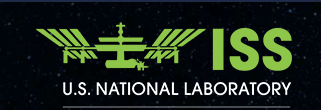
Payloads onboard the SpaceX Dragon capsule berthed with the International Space Station (ISS) Sunday morning. Many of the investigations transported by SpaceX’s Dragon capsule are payloads sponsored by the ISS U.S. National Laboratory. The Center for the Advancement of Science in Space (CASIS) is tasked with managing and promoting research onboard the ISS National Lab, and all manifested payloads must contain the potential for Earth benefits.
Below provides a summary of the major ISS National Laboratory-sponsored payloads delivered, which represent a variety of scientific disciplines.
- Eli Lilly Protein Crystal Growth: Kris Gonzalez-DeWhitt, Michael Hickey, Eli Lilly & Co. —In this project, a series of experiments will crystallize several protein complexes that consist of medically relevant proteins bound to potential therapeutics. Understanding the structure of proteins involved in disease allows the design of more effective drugs to target these proteins. Proteins grown in microgravity have been shown in many cases to produce more ordered structures, allowing better understanding of protein function and potentially improving structure-based drug design.
- Eli Lilly Rodent Research 3 Myostatink: Rosamund Smith, Ph.D., Eli Lilly & Co.—This project will study the impact of anti-myostatin antibodies on muscle wasting in spaceflight rodent models. Myostatin is a protein that negatively regulates muscle growth, so anti-myostatin antibodies could potentially improve muscle growth and function. Microgravity induces rapid muscle loss, providing an accelerated environment for testing this potential drug for treating disuse muscle atrophy in patients on Earth.
- Genes In Space: Anna-Sophia Boguraev, Student (In partnership with The Boeing Company, Math for America and miniPCR)—This student experiment involves DNA amplification using a miniPCR (Polymerase Chain Reaction) machine onboard the ISS. It is the winning student experiment from the Genes in Space innovation challenge. This challenge invited student participants to propose pioneering DNA amplification experiments utilizing the unique environment of the ISS. Anna-Sophia’s experiment will focus on immune suppression and assess whether changes in DNA can be detected onboard the ISS.
- Microchannel Diffusion: Alessandro Grattoni, Ph.D., Houston Methodist Research Institute—This project will use the ISS to better understand fluid flow through very small channels (nanofluidics). These experiments cannot be performed under normal gravity and will aid the development of a drug delivery implant that can be remotely controlled for a specific dosage—a form of personalized medicine.
- Wetlab-2: Julie Schonfeld, NASA Ames Research Center—WetLab-2 is an ISS National Lab suite of scientific instrumentation that provides improved research capabilities for ISS investigators. The system enables investigators working with cell cultures or animal and plant tissues to process samples and extract purified high-quality RNA (a nucleic acid involved in gene expression), which can then be returned to Earth for analysis or directly analyzed in-orbit using a technique called quantitative real-time polymerase chain reaction. WetLab-2 tools also provide individual experimental capabilities for a variety of other research-enabling improvements related to sample preparation and analysis for both biological samples and fluids systems.
- SyNRGE3: Mutualistic Plant/Microbe Interactions: Gary W. Stutte, Ph.D., SyNRGE, LLC—This project will study mutualistic plant-microbe interactions in microgravity. Most land plants establish physical interactions with fungi that increase uptake of nutrients and improve stress resistance. This process is directly or indirectly responsible for producing 20% of the protein consumed in the human diet. SyNRGE3 seeks to determine if certain changes in this mutualistic relationship are associated with molecular changes that could be exploited to identify and select more effective plant strains for use on Earth.
- Demonstration and TRL Raising of the Net Capture System on the ISS: Ron Dunklee, AIRBUS DS Space Systems, Inc.—In this project, a variation on a system developed to remove end-of-life geostationary satellites will be investigated for its application to capture asteroids of the 7–10m diameter class. In comparison to other methods, the net capture system is relatively insensitive to target tumbling and simplifies spacecraft design through its ability to deploy at a distance. The refinement and extension of this system will contribute to improved orbital debris removal, sample retrieval missions, and human spaceflight operations (e.g., as preventive safety during spacewalks).
On this mission, the ISS National Lab also supports a variety of commercial investigations from NanoRacks, LLC (Including CubeSat deployers and a number of investigations in the CubeLab form factor), and additional education payloads for which CASIS is a sponsor, including those derived from the Student Spaceflight Experiments Program (SSEP) and the High School Students United with NASA to Create Hardware (HUNCH). One SSEP investigation focuses on how spaceflight affects the formation of tin whiskers (crystalline structures that originate from metals covered in or plated with tin)—tin whiskers have become a serious problem for electronics manufacturers and scientists. Through their experiment, students from Palmetto Scholars Academy in South Carolina will investigate how the g-force experienced on the journey to and from the ISS, including launch and re-entry, affects the development of tin whiskers. The students hope their results will increase our understanding of spaceflight’s effect on electronic devices and their stability.

